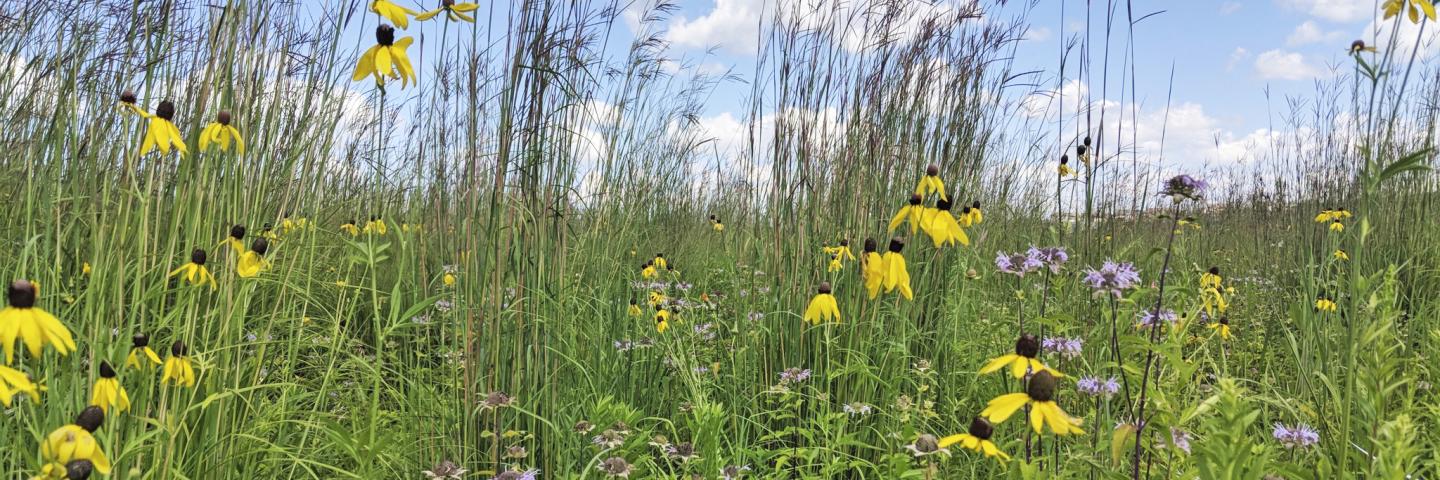Wetland Scrapes the Surface of Land Restoration Goals

Determined to restore her land to its original state, Carol Eloranta enrolled in the Conservation Stewardship Program to help create a thriving habitat for a range of diverse species and pollinator plants.
Background
Retired Wisconsin Department of Natural Resources technician, Carol Eloranta, grew up on a dead-end road in Clark County. In 1944, her parents purchased an 80-acre plot of land where they raised all eight of their children. Prior to their purchase, the property was a working dairy farm for over 60 years, then rented out for growing cash crops until 2016. Inspired by environmentalist Rachel Carson’s book, “Silent Spring,” and concerned by the impacts row crops were having on the field, Carol grew determined to restore the land back to its original state. She wanted to give back to nature and preserve what she loved about growing up on the farm and being outdoors.
Highlights

In 2017, Carol began partnering with the Natural Resources Conservation Service (NRCS) in hopes of restoring her cropland to wetlands through a cost-share program. She enrolled in the Conservation Stewardship Program (CSP), which provided initial assistance with converting her fields from row crops to perennial grass. In the following years, she planted corridors of trees and shrubs and a strip of pollinator native seed mixture.
In 2020, a shallow scrape was constructed on the property that maintains standing water even through unusually dry seasons. The pollinator planting has matured into a thriving habitat for bees and other native pollinators. Although her trees and shrubs are still growing, she looks forward to the habitat they will eventually provide for the badgers and short-eared owls that already frequent the scrape. Even in retirement, Carol is continually working to create spaces on her property where wildlife can thrive. Now when she works outside, she can listen to the bubbling songs of the bobolinks accompanied by a chorus of frogs and toads that live in her wetland scrape.
Future Plans
Carol wants to continue to create more biodiversity and improve the soil biology while lessening soil compaction on her land. She is working to control the ever-present Canada Thistle and manage the native plants that are slowly coming back. She is hoping to continue working with the NRCS and eventually enroll her land in the NRCS Agricultural Conservation Easement Program (ACEP) to protect the progress she has made on the land her family has stewarded for nearly 80 years.
Additional Information
Agricultural Conservation Easement Program - Wisconsin
The Agricultural Conservation Easement Program (ACEP) helps landowners, land trusts, and other entities protect, restore, and enhance wetlands or protect working farms and ranches through conservation easements.
Learn MoreConservation Stewardship Program - Wisconsin
The Conservation Stewardship Program (CSP) can help you identify natural resource problems in your operation and provide technical and financial assistance to solve those problems or attain higher stewardship levels in an environmentally beneficial and cost-effective manner.
Learn More
